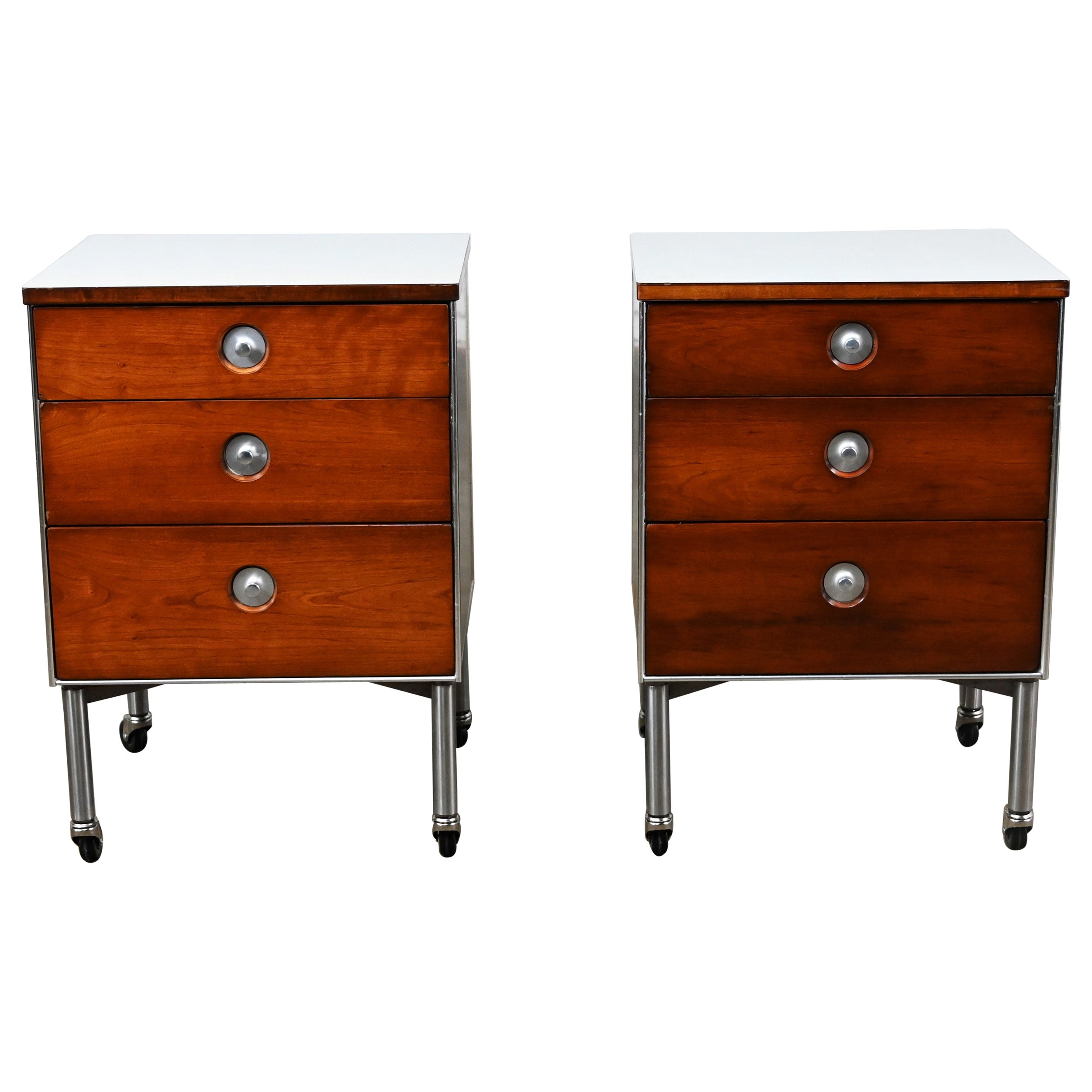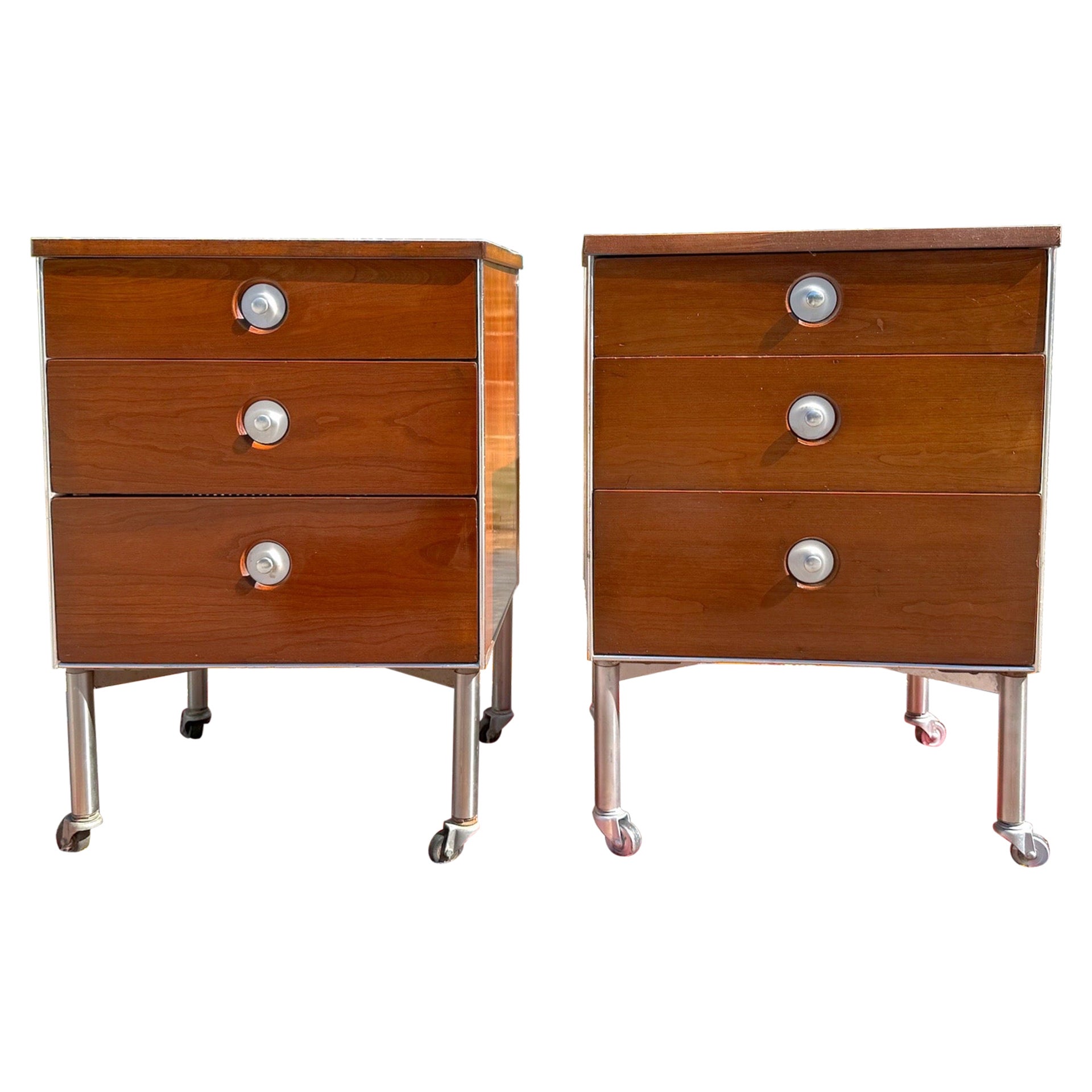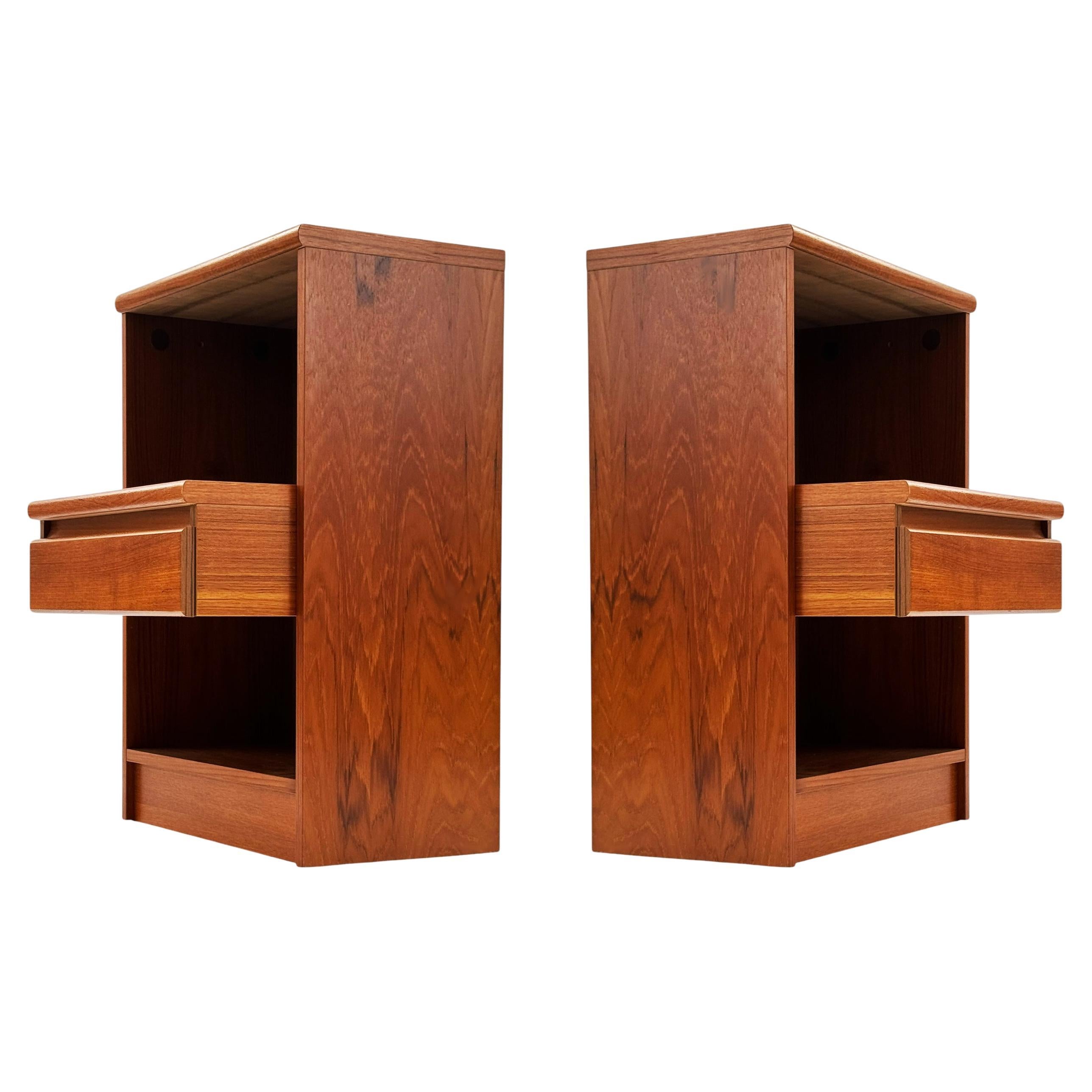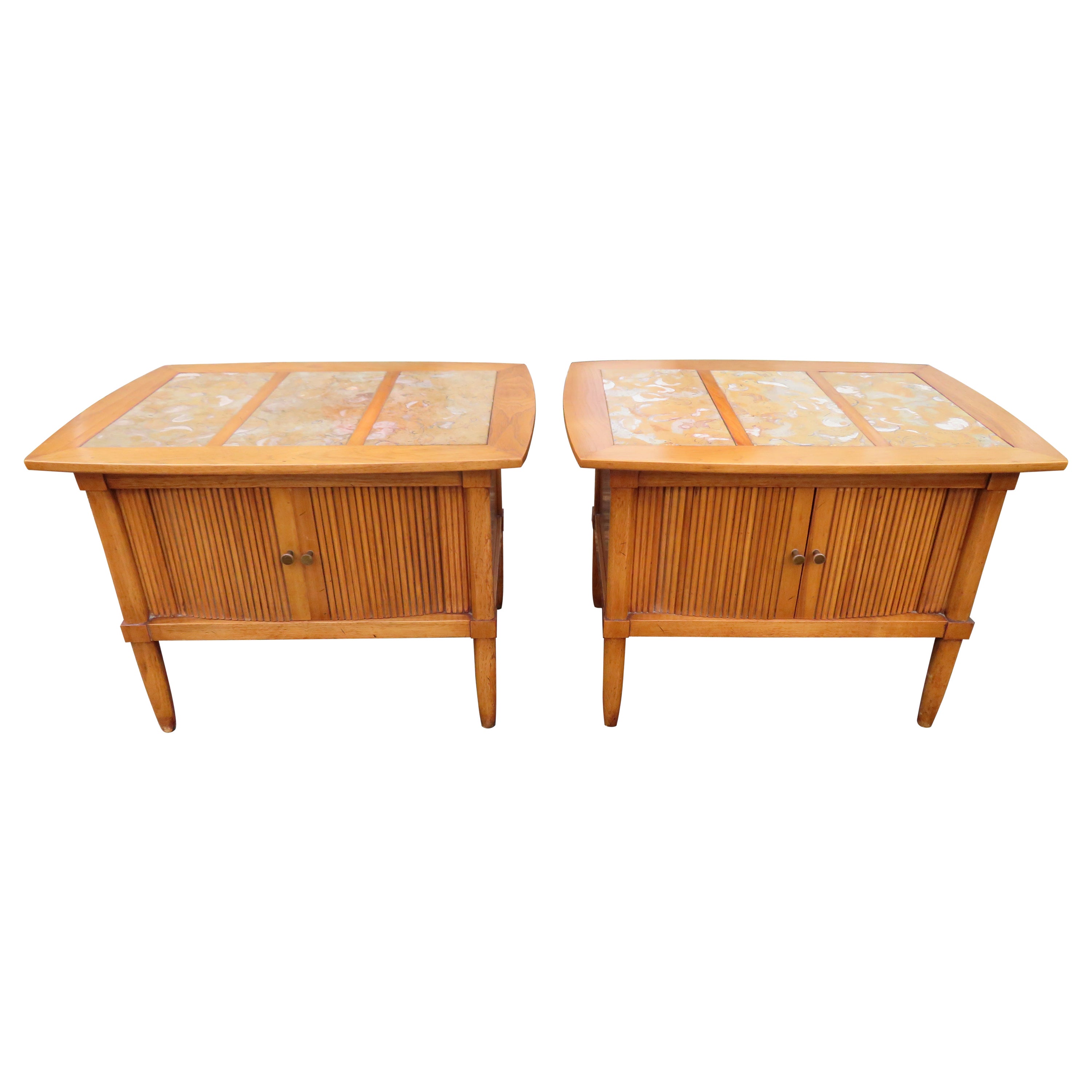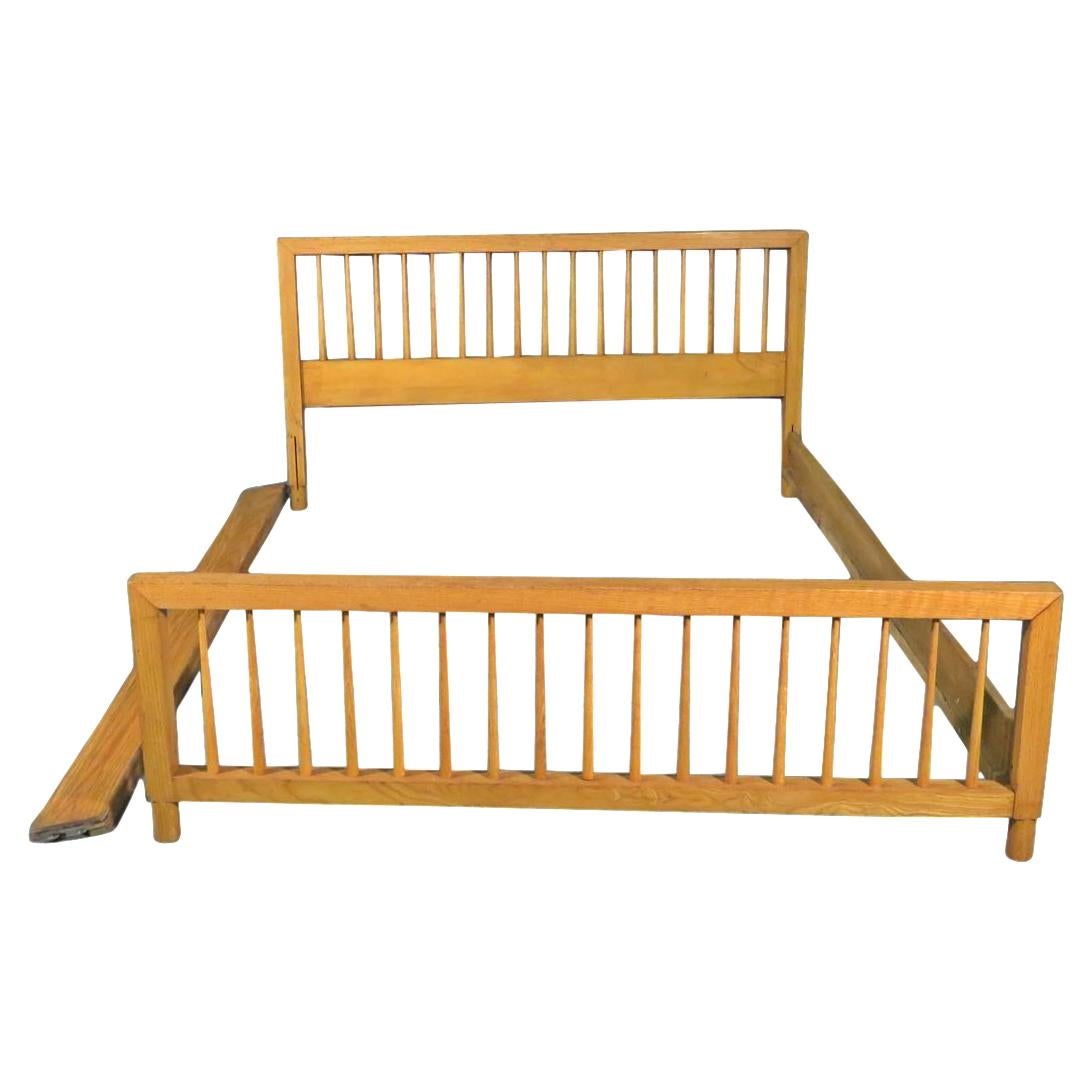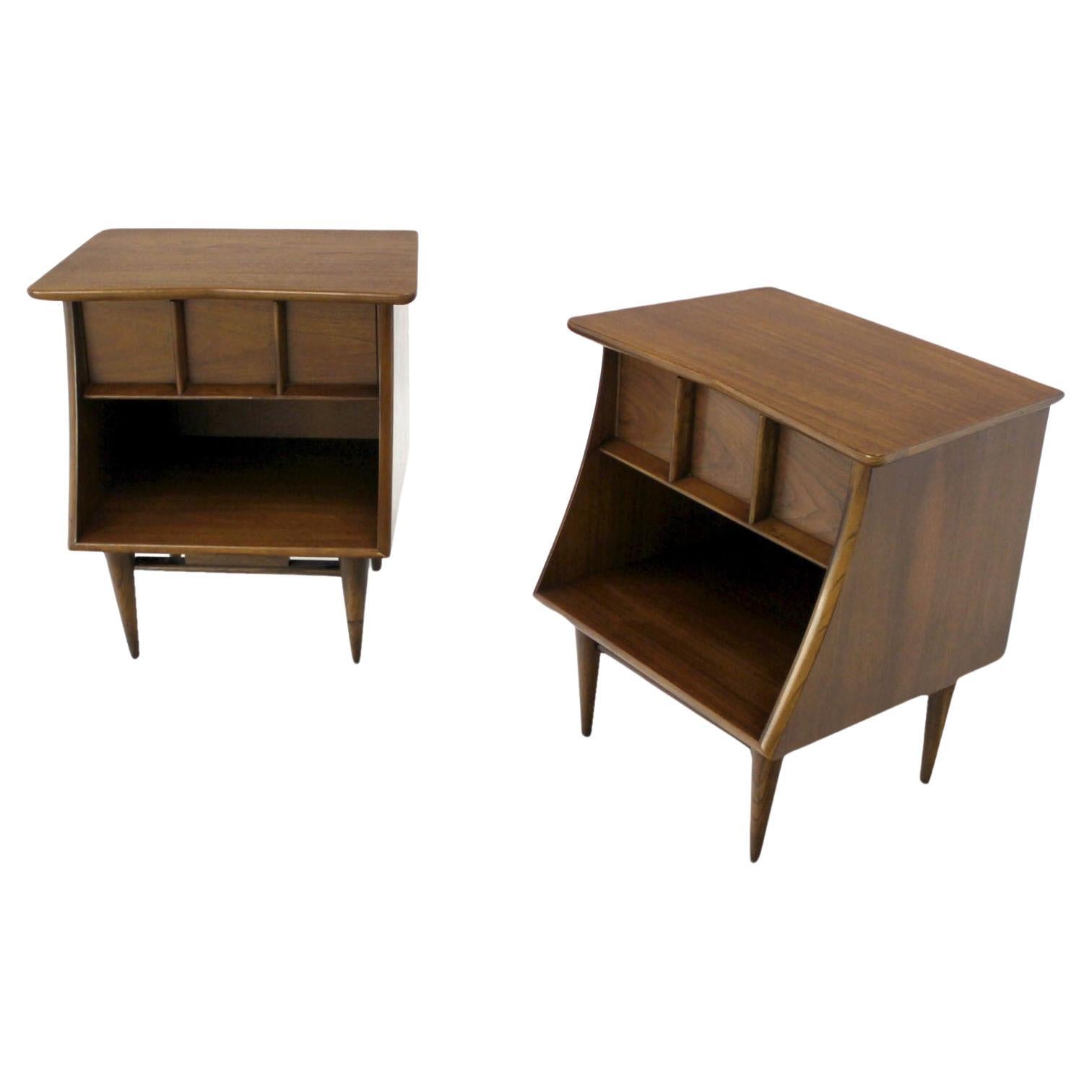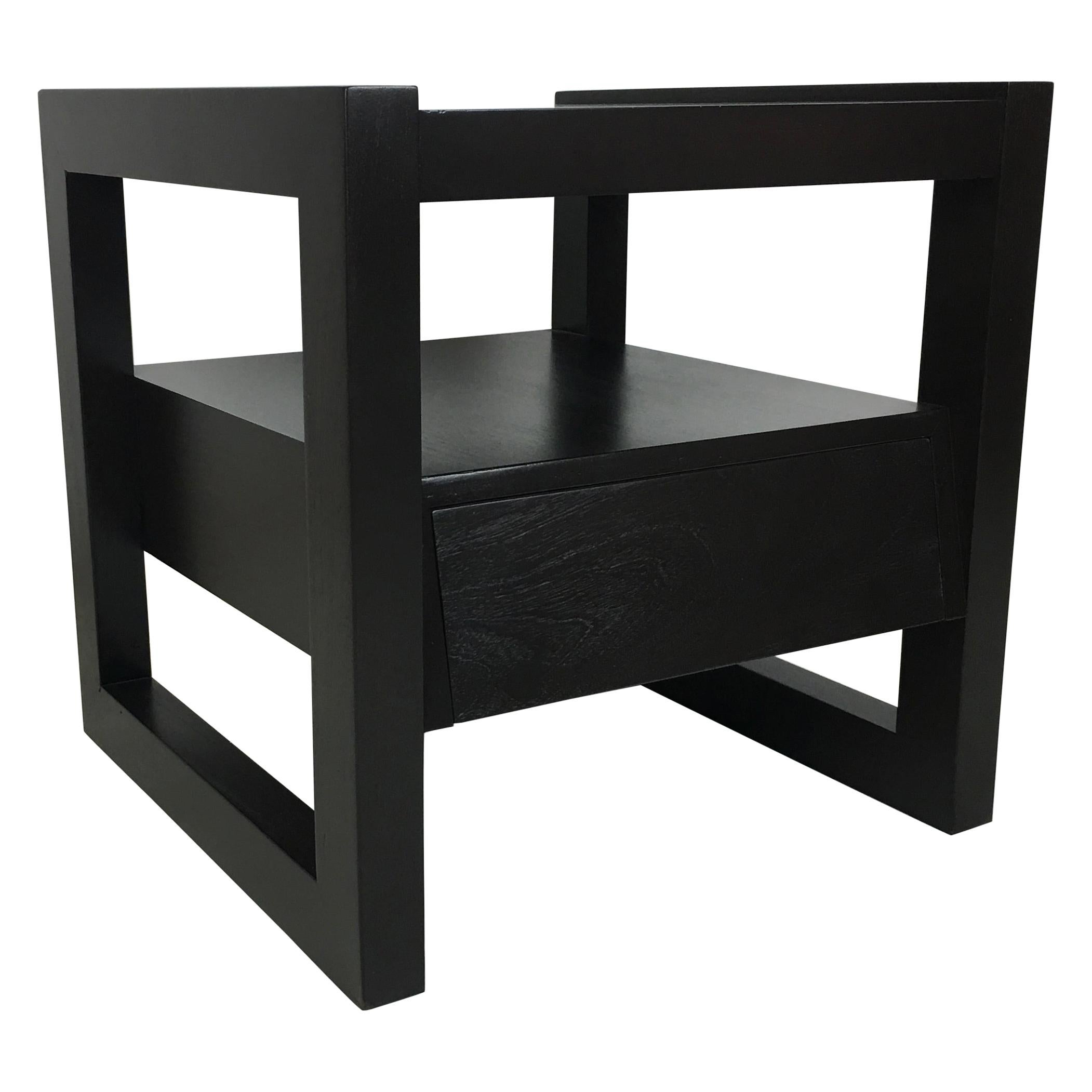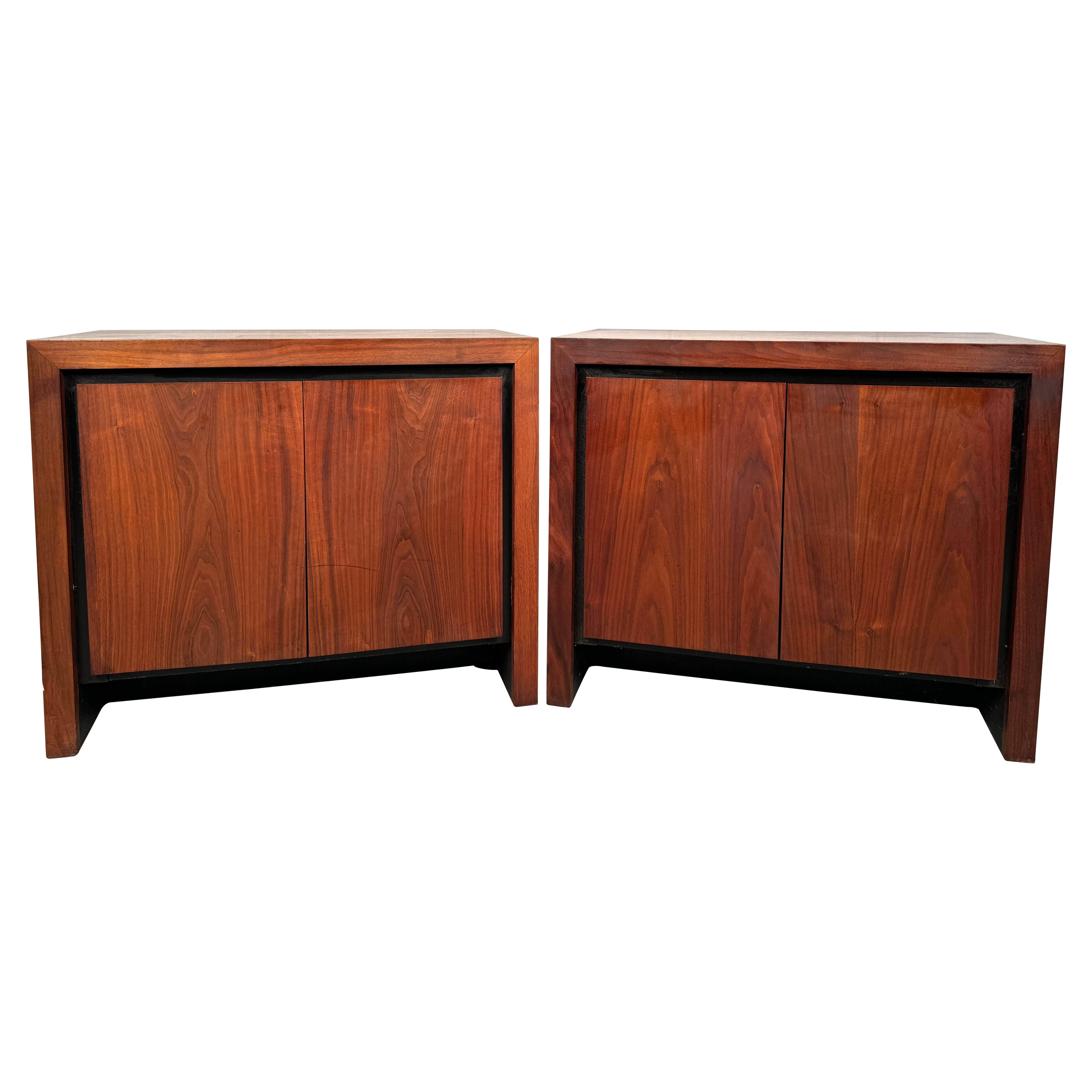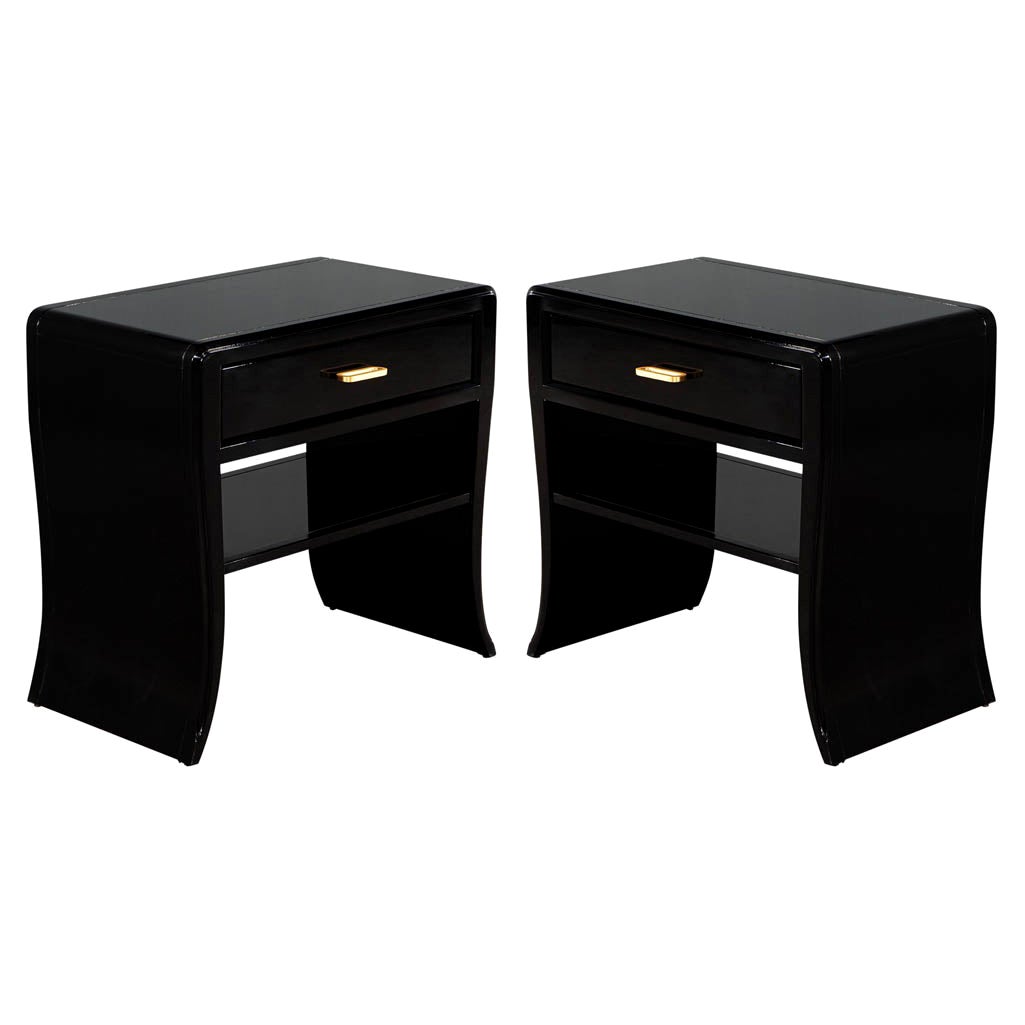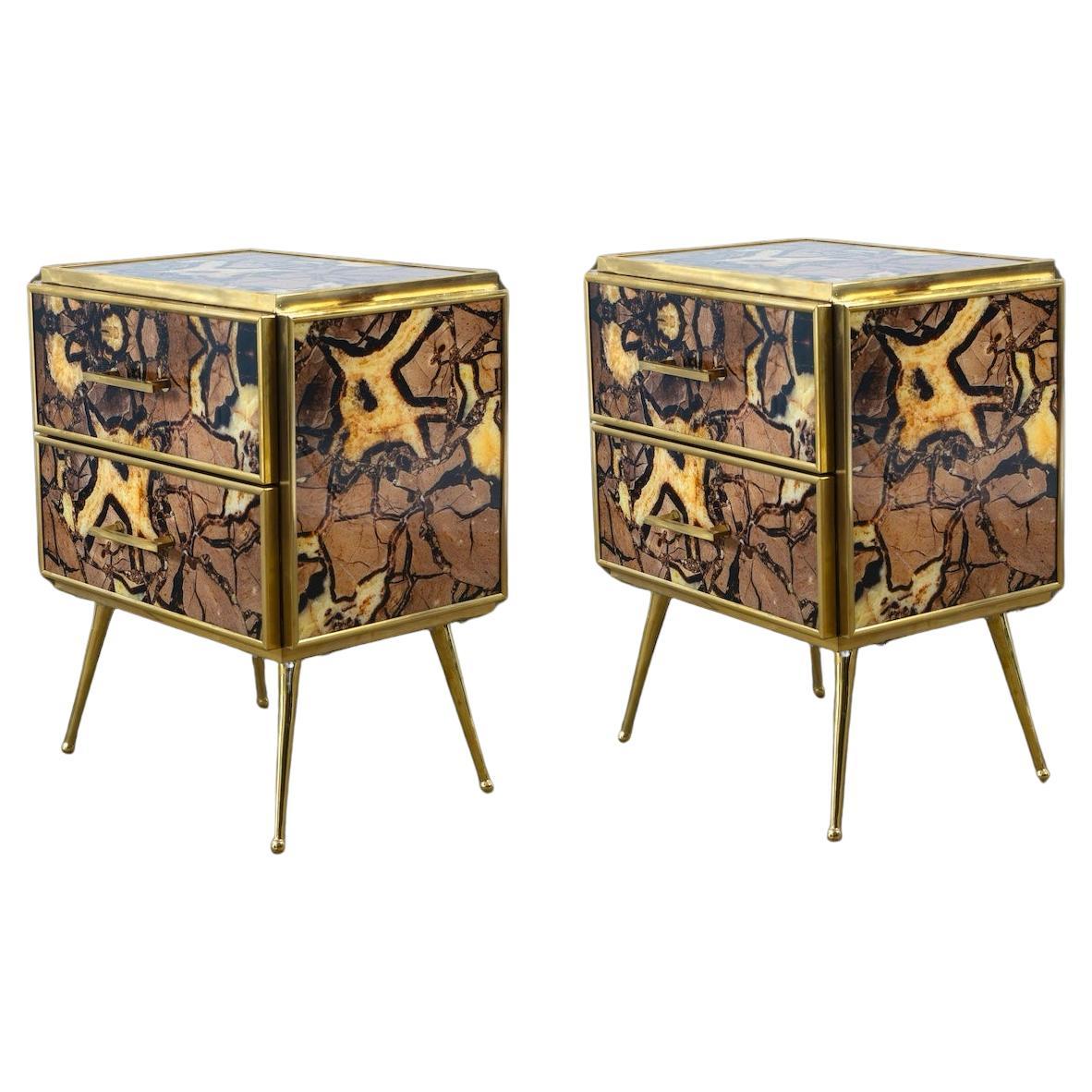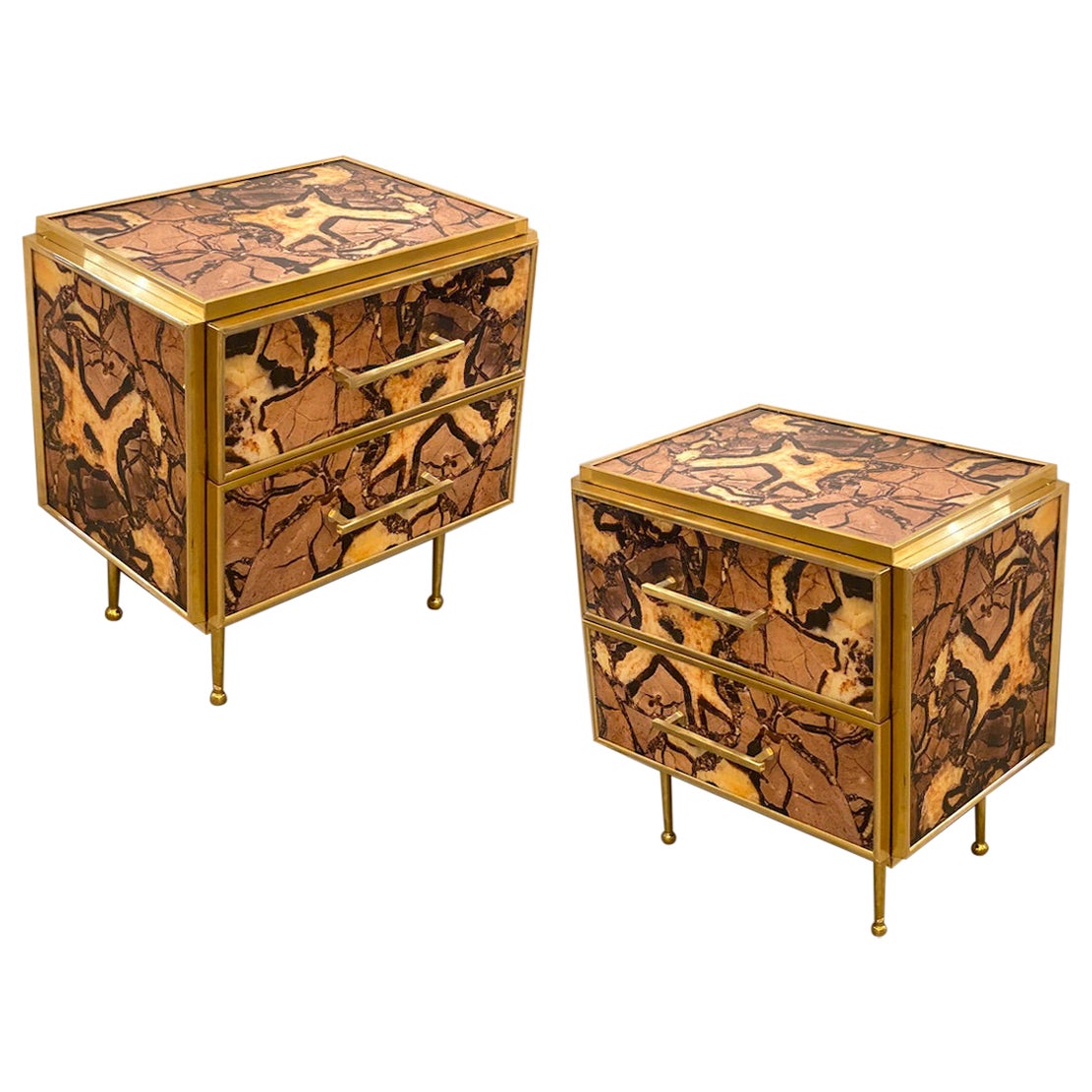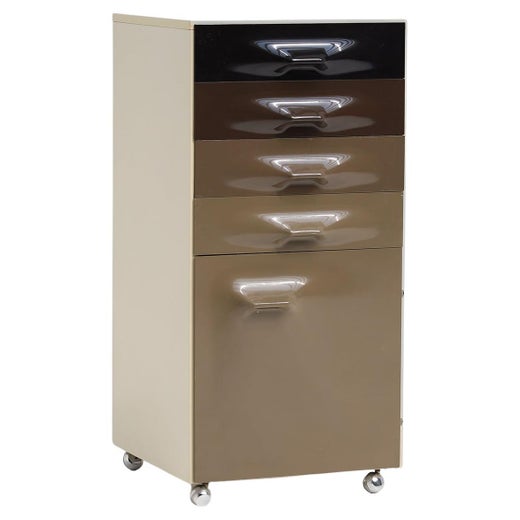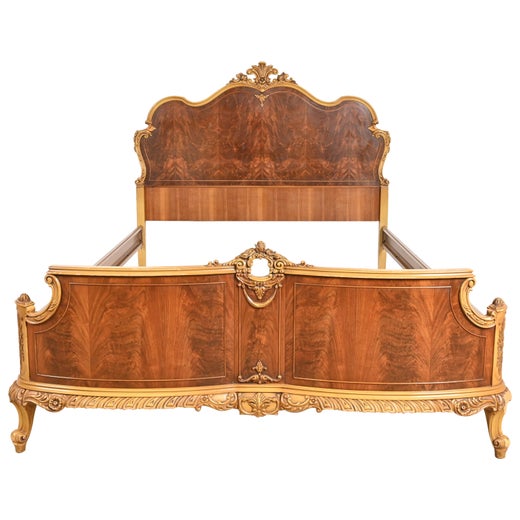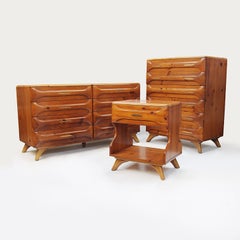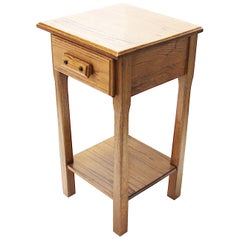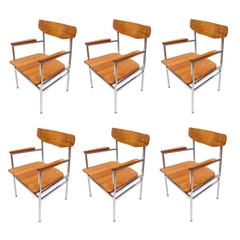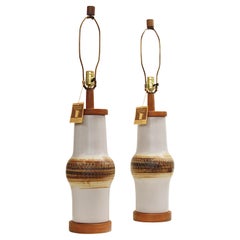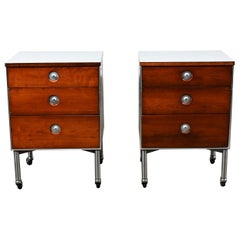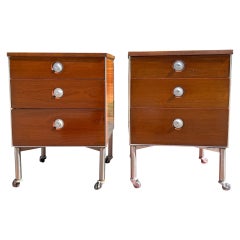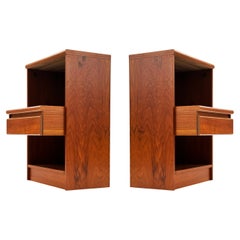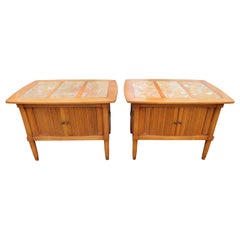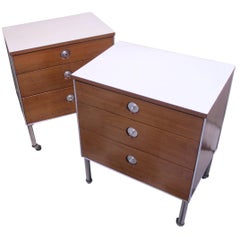
Pair of Mid-Century Modern End Table or Night Stands by Raymond Loewy
View Similar Items
Pair of Mid-Century Modern End Table or Night Stands by Raymond Loewy
About the Item
- Creator:Raymond Loewy (Designer),Romweber Furniture Co. (Manufacturer)
- Dimensions:Height: 29 in (73.66 cm)Width: 24.25 in (61.6 cm)Depth: 17.25 in (43.82 cm)
- Sold As:Set of 2
- Style:Mid-Century Modern (Of the Period)
- Materials and Techniques:
- Place of Origin:
- Period:
- Date of Manufacture:Early 1960s
- Condition:Wear consistent with age and use. Tables have been professionally refurbished but do show some very small chips to the veneer and Formica tops as well as some light tarnishing to some metal surfaces.
- Seller Location:Lafayette, IN
- Reference Number:1stDibs: LU268038116783
Raymond Loewy
For those in the know, French-born American industrial designer Raymond Loewy is the “father of streamlining.” He is widely recognized as a pioneer of industrial design consulting — a creative powerhouse who took aim at cluttered designs and simplified them. Loewy left his mark on everything from toothbrushes to trashcans to spacecraft interiors. He designed cars, worked in illustration, and crafted comely dressers and other furniture.
Loewy was born in Paris, France. At age 15, he designed a model airplane that was powered by rubber bands. It won the James Gordon Bennett Cup of 1908. Loewy patented the model kit for this plane by the following year and saw brisk sales. With his savings, Loewy was able to study at the University of Paris and then at Ecole de Lanneau, where he earned an engineering degree in 1918.
Loewy moved to New York City in 1919 and found work as a window designer for the department stores Macy's, Wanamaker's and Saks and as a fashion illustrator for Vogue and Harper's Bazaar. Loewy’s big break in industrial design came in 1929 when he altered the Gestetner duplicating machine — removing jutting parts and encasing the moving works in an understated cover. It caused a sensation within the industry — and companies began to call on him.
Loewy designed packaging for Coca-Cola and revised the look of Lucky cigarettes. The “Loewy Look,” which referred to the designer’s efforts to strip a product of any unnecessary detail and streamline its appearance, began to characterize hundreds of products.
Loewy found clients in a dizzying number of companies. He did everything from retooling logos to redesigning products. His 1934 Sears Coldspot refrigerator was a sleek innovation that broke sales records. His Pennsylvania Railroad locomotive resembled a speeding bullet and was the darling of the 1939 World’s Fair. Loewy even reworked shapes for snacks at Nabisco. By the time World War II gathered steam, Raymond Loewy Associates — the industrial design firm he founded — had been operating in a number of American cities. When Time magazine featured him on the cover in October 1949 — Loewy was not shy about publicity — his profile soared.
Loewy worked with Studebaker for decades. The success of their 1953 Starliner coupe was due to his revolutionary design, while their 1963 futuristic, fiberglass-bodied Avanti, which came with advanced safety features and materialized at a time when the company was experiencing financial hardship, was his crowning achievement for the maker.
Returning to his roots in aviation, Loewy worked for NASA from 1967 to 1973 on the interior design of the Skylab space station. He was also involved in the interior designs of the Concorde supersonic jet and Air Force One. Loewy delighted in creating furniture and collaborated with manufacturers such as Mengel Furniture, Rosenthal and Doubinsky Frères. In the 1970s, Loewy and his wife shuttered their businesses and retired in France.
On 1stDibs, find vintage Raymond Loewy cabinets, serveware, seating and more.
Romweber Furniture Co.
Some vintage Romweber Furniture Company designs may strike the young as passé. But for fans of a certain age, the American brand never went out of style.
The Romweber story began in the late 1800s, with the launch of American Furniture Company, which made bedroom furniture, Batesville Cabinet Company, a dining-room-set manufacturer, and Batesville Coffin Company. The three companies eventually merged to become a large and reputable manufacturer of case goods, furniture and more.
Not unlike many American companies, production at Romweber suffered during the Great Depression. The brand managed to stay afloat by making a rather strange pivot — to selling five-pound fruitcake boxes. During the Second World War, Romweber pivoted again, this time to the production of ammunition boxes and pontoons for American troops and, naturally, furniture for officers’ quarters.
While Romweber furniture (spelled “RomWeber” in vintage advertisements), dating back to the early 20th century, had designers working in the French Rococo and Chippendale styles, the brand is best known for its mid-century modern pieces. In the postwar years, Romweber manufactured walnut case pieces and storage cabinets that featured decorative olive-ash and burl-wood inlays with brass hardware as well as solid oak credenzas and dining tables designed by the likes of Harold Schwartz. For collectors of sophisticated 1950s furniture, the company’s sturdy Viking Oak line is particularly popular.
“It’s not uncommon for customers to say, ‘My parents had this Romweber Viking set,’” says Adam Cramer of collectors who visit Liberty & 33rd, the gallery he owns with his wife in South Bend, Indiana, about three hours north of Romweber’s birthplace in small-town Batesville. “It’s solid oak,” Cramer tells 1stDibs of the line of tables, chairs, desks and more.
Solid oak is the product of slow-growing deciduous trees. Solid oak furniture is durable, desirable and an investment that is usually associated with a hefty price. In solid oak furnishings, such as those that make up the covetable Romweber Viking Oak line, which launched in 1935, there aren’t any scraps of other components in the construction.
Inspired by Scandinavian folk design, Romweber’s Viking Oak is said to have enjoyed one of the longest runs for a commercial furniture line in history. The collection went out of production in the late 1980s, and mid-century editions remain highly prized for their exceptional quality and hand-carved details.
Find vintage Romweber furniture on 1stDibs.
More From This Seller
View AllVintage 1950s American Mid-Century Modern Dressers
Pine
Vintage 1960s North American Mid-Century Modern End Tables
Iron
Vintage 1960s American Mid-Century Modern Chairs
Chrome
Vintage 1970s American Mid-Century Modern Table Lamps
Ceramic, Walnut
Vintage 1960s Mid-Century Modern Lounge Chairs
Metal, Steel
Vintage 1960s American Mid-Century Modern Lounge Chairs
Leather, Wood, Walnut
You May Also Like
Mid-20th Century American Mid-Century Modern Night Stands
Aluminum, Steel
Mid-20th Century American Mid-Century Modern Night Stands
Metal, Aluminum
Vintage 1970s Danish Scandinavian Modern Night Stands
Wood
Vintage 1960s American Mid-Century Modern End Tables
Stone, Brass
Mid-20th Century Mid-Century Modern Beds and Bed Frames
Walnut
20th Century American Mid-Century Modern Night Stands
Walnut
